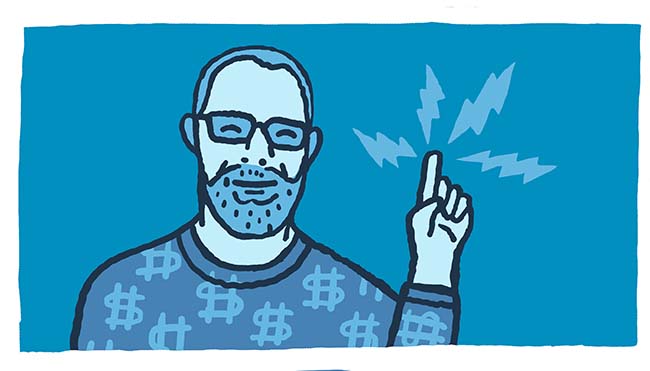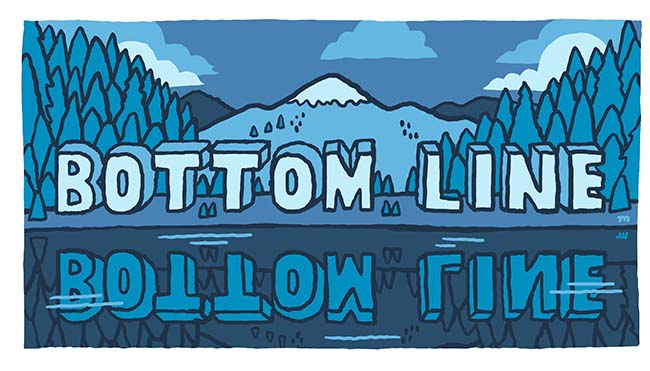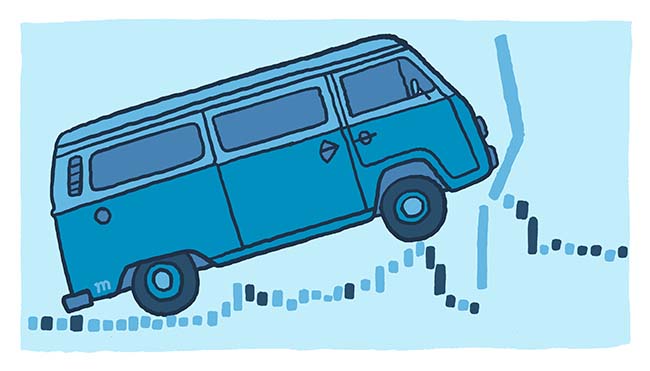I know a thing or two about short squeezes, having personally made nearly $1,000,000 in just one week of January 2021 when GameStop surged to $483.00 a share. On my biggest day that week, I finished up $478,950.79. No, those results aren’t typical. In this article, I’ll share everything I’ve learned about short squeezes, including how they happen, how to spot them, and how I’ve been able to profit from them.
What is a Short Squeeze
A short squeeze occurs when a stock that is heavily shorted experiences a rapid increase in price that forces short sellers to cover their positions by executing buy orders at market price. This generates a massive imbalance between supply and demand where short sellers lose, and the bulls of Wall Street win.
Short squeezes like GameStop, Volkswagen, or DryShips are rare. However, short squeezes of smaller proportions happen on a regular basis in the market. Most short squeezes are simply the result of overconfidence among short sellers combined with an unexpected catalyst that brings in bulls.
You can find short information on stocks through most financial sites like Yahoo and Google Finance. They list the short interest and the percentage short of the float along with the short interest ratio.
How does a Short Squeeze Happen?
Short squeezes often happen at the end of deep slumps, like the one we saw in March of 2020 as coronavirus fears took hold. At such points, most traders have already sold shares and short sellers confidently hold positions.
“In general, short squeezes are precipitated by large mark-to-market losses due to upward price movements of the shorted stock and/or high stock borrow financing rates which make it unprofitable to stay in trades for long periods of time,” says analyst Ihor Dusaniwsky of data firm S3 Partners.
Short Interest
Short interest refers to the number of shares held short against a stock compared to the float. If for example, 10% of the float is short, and the float is 10 million shares, we know there are 1 million shares held short against the company. But what if the stock only trades on 500,000 shares of average daily volume? Of course, that volume is a combination of buying and selling. If the stock comes out with amazing news and suddenly buyers come in and the stock squeezes up 25-30% or more.
We know 10% of the float is down that much. Some of them may start to panic and decide to exit. How do they exit their position? It’s by pressing the Buy Button. That means more buying volume during a time where there is already a supply-demand imbalance to the buy side. This can create the beginning of a short squeeze.
What happens when the the short interest is 100%? You might think it’s impossible, but as we learned during the epic GameStop short squeeze, the practice of shorting, then lending out shares and letting people sell them short in the market can create more shorts than the total shares available.
Now as the stock starts rapidly increasing in price 50%, 70%, and more, there are millions of shares facing massive unrealized losses. Once the bulls of the stock market smell blood in the water, they move in on the short-sellers weakness and begin adding even more buying pressure. As short sellers capitulate and buy back shares to cover their position, the stock soars to new highs.
Short Ratio
The short ratio is a little different than short interest. The short ratio tells us how many days it will take for all short sellers to cover based on the average relative volume. This is also known as Days to Cover. In our example above a stock trades with 500,000 shares of daily volume. But if 1 million shares of the stock are short, it would take 2 days in order for shorts to cover. This gives the stock a short ratio of 2.
High short ratios can result from stocks where shorts have slowly accumulated massive positions while the stock trades on very light volume. This can be a dangerous position for a short seller, and with short interest being readily published and available to market participants, these stocks can be a candidate for a bull raid.
Bull Raids and Bear Raids
Bull raids occur when bullish traders identify a stock that is technically positioned for a short squeeze. This is going to be a stock with very high short interest, a high short ratio, and a beaten-up daily chart where long-biased traders can establish positions with relatively minimal risk. The availability of market data, including short interest and short ratio, actually puts short sellers are a significant disadvantage. If they acquire a large position, their cards become exposed to the market, and it makes them vulnerable.
Bear raids are the opposite of bull raids. Bear raids occur when short sellers target a stock that does not have a short sale restriction and simultaneously hit the bid to force longs to sell and get stopped out. This is more likely to occur on a stock that is already extended on the daily level.
Cost to Borrow Shares
When a short seller wants to initiate a short position, they must borrow the shares from a shareholder. The shareholder is reimbursed when they lend out their stock, and the short seller pays a borrowing fee. The fees are established by clearing firms and stock brokers and they can change at any time. The moment a stock begins to experience volatility, borrowing fees increase.
When short sellers are holding shares, the cost to borrow can increase while they are holding, thus increasing the daily cost for them to maintain the short position. This is almost like taking a loan with an adjustable interest rate. It creates a risky situation for the short seller.
How to Spot a Pending Short Squeeze
There are several identifying marks for a possible short squeeze. High short interest, high short ratio, high cost to borrow, and a stock that is beginning to rally off the lows.
Tips for Trading a Short Squeeze

As you can see from the examples above, short squeezes are one of the most powerful short-term market catalysts and can generate huge surges in share price.
Short squeezes can happen very quickly and can move the stock more dramatically than a normal rally, causing huge losses if you are not paying attention.
What happens is new buyers are alerted when prices start to move which even further magnifies the buying and could cause a stock to go parabolic.
A good way to avoid being caught in a short squeeze is to always place hard stops on your short positions, especially if you are holding them over night.
It is also important to note than not all rushes to buy back shares that have been shorted are sparked by positive news.
Sometimes a rush happens because the prime broker (the part of a bank that is tasked with stock lending) has demanded the return of the borrowed shares.
You need to familiarize yourself with the short interest ratio (SIR), which measures the number of shares short divided by the average daily trading volume of the stock that interests you.
Using a Short Squeeze to Your Advantage
A squeeze can be of great benefit to those traders who hold so called long-positions. For instance, let’s say you are looking at a flawed and poor performing company that underperforms, lacks funding, has inadequate management, and is heavily-shorted.
Now imagine the company publishes a positive press release and its share-price rises significantly to more than $120 apiece within just a few days. In this position, you are highly likely to profit from short sellers who are betting against the stock because the company.
When the price of the stock soars, many short sellers will start to exit their position and buy shares to cover. It is at this particular time that you could profit from the actions of these traders.
Bottom Line

Traders can make huge profits by taking advantage of the short squeezes.
If you are looking to benefit from squeezes, you need to know how to trade them correctly.
No one knows when a short squeeze is going to happen but by keeping track of heavily shorted stocks you can be alerted when one is starting to take off.
Then you can trade it like a momentum stock but make sure to start small because the stock will be extremely volatile.
Short Squeeze Examples
What also happens is new buyers are alerted when prices start to move which even further magnifies the buying and could cause a stock to go parabolic.
GameStop
The most recent short squeeze most traders remember is GameStop. An epic squeeze that began in the fall of 2020, but took off in earnest in January of 2021. GameStops meteoric rise to $483 per share became a cultural movement. It was an opportunity for retail traders to finally stick it to the man and win against the big hedge fund traders. It was well publicized that hedge funds that were short GameStop lost billions of dollars during the squeeze.
The GameStop short squeeze revealed an unusual aspect: various data aggregators indicated that the short interest in GameStop exceeded 100%, meaning that more shares were short than were actually available. This seemed improbable. On January 25th, 2021, Tim Quast, the CEO of Market Structure Edge, appeared on Benzinga’s PreMarket Prep to elaborate on this issue.
He highlighted the outdated nature of short interest as a metric, labeling it a measure from 1975 that holds no significance in today’s electronic market. Quast’s firm pays attention to short volume instead. He explained that designated market makers have the privilege of bypassing the requirement to locate shares to short and can essentially create them. This practice isn’t malevolent but rather a method to uphold orderly markets.
Dryships
A good example of this was Dryships ($DRYS) that ran up over 2,000% following the news that Trump won the election.
This stock was heavily shorted but with the surprise win, shares were back in favor and buyers drove the stock up causing shorts to cover and the stock to shoot up. Shares were trading below $5 per share but over the span of just 4 day, shares breached $100 per share!
Volkswagen
Here is an example of a short squeeze: In midst of the 2008 financial crisis something unexpected happened. German automaker Volkswagen was almost heading for bankruptcy but ended up becoming the world’s most valuable company for one, brief day.
Back then, investors and hedge including Elliott Management Corp and D.E. Shaw had shorted Volkswagen shares. However, these investors were not aware that Porsche SE had been quietly buying almost all freely traded ordinary Volkswagen shares in an attempt to take over the company.

In March 2008, Porsche SE denied claims that it planned to take over Volkswagen. Several months later the company disclosed it owned 42.6% of Volkswagen freely traded shares as well as controlling another 31.5% through financial instruments.
Then came the squeeze. When Porsche disclosed it had amassed control of roughly 75% of the shares in Volkswagen, short covering reached proper squeeze level, pushing Volkswagen shares from a low just above €200 on Oct. 19 to an absolute peak of €1,005 on Oct. 23.
This short squeeze briefly made the Wolfsburg-based automaker become the most valuable company in the world, worth more by market capitalization than Exxon Mobil.
Investors and hedge funds that had shorted the stock were caught off guard and suffered massive losses, and some ended up taking legal action against Porsche SE.
The sudden news, combined with a large number of short positions and a very small float, caused the stock to skyrocket within a short period as investors desperately tried to cover their positions.
“It was one of the most painful days in my career,” Arndt Ellinghorst, then at Credit Suisse, but now a Senior Managing Director at Evercore ISI says, according to the Financial Times. “The pain among investors was unparalleled versus any other market scenario I have encountered.”
Tesla
Another good example of a short-squeeze is Tesla (NASDAQ: TSLA), which has squeezed traders by a year-long bull run that has lifted the stock from $224 last year to above $1,800 as demand for its electric vehicles continues to improve.
Tesla has been a target of short-sellers, but the stock has recorded huge gains, prompting the company to issue a 5-for-1 stock split. For months, short-sellers have lost billions at the hands of the Elon Musk-led company.
FAQ’s
What is the Short Interest Ratio?
The short interest ratio (SIR) measures the amount of shares short divided by the average daily trading volume.
So if the SIR is 3, then that means it would take 3 days at the average volume levels for shorts to buy back their shares under normal trading conditions. However, during a short squeeze, volume
What is Gamma Squeeze?
A Gamma Squeeze refers to a special type of short squeeze that is fueled by options trading. When market makers sell options contracts, they can expose themselves to unlimited losses if they don’t hedge their positions. If they add a hedge, it will fuel the squeeze, but in order to minimize their losses, they have no choice. The fuels a massive short squeeze.
An Example of a Gamma Squeeze
As an example, if they sold 10,000 calls for GameStop at $100, they are essentially SHORT 1 million shares. That means when the stock hit $110, they were down $10 million. When the stock his $200, they were down $100 million. In order to hedge the position, they need to do one of two things. Buy calls at a higher strike price than them (if anyone is willing to sell them), or buy the stock outright so they can meet their obligation for the options contract if required. The problem with buying 1 million shares in the middle of a short squeeze is that the order alone will send the stock even higher. They’re trapped, and the losses are only getting bigger.






